 Our guest curator for this exhibit is Michael Leannah, author of the new book Something for Everyone: Memories of Lauerman Brothers Department Store from the Wisconsin Historical Society Press. Leannah has had a long career in the public schools of Milwaukee and Sheboygan and also works as an author and editor. He grew up in Marinette, Wisconsin within walking distance of Lauerman Brothers Department Store and worked there briefly as a teenager. To research this feature for Recollection Wisconsin, Leannah visited the sites of former department stores in Kiel, Manitowoc, Milwaukee, and Oshkosh and was pleased to discover that many of these unique buildings are still standing.
Our guest curator for this exhibit is Michael Leannah, author of the new book Something for Everyone: Memories of Lauerman Brothers Department Store from the Wisconsin Historical Society Press. Leannah has had a long career in the public schools of Milwaukee and Sheboygan and also works as an author and editor. He grew up in Marinette, Wisconsin within walking distance of Lauerman Brothers Department Store and worked there briefly as a teenager. To research this feature for Recollection Wisconsin, Leannah visited the sites of former department stores in Kiel, Manitowoc, Milwaukee, and Oshkosh and was pleased to discover that many of these unique buildings are still standing.
The department store had its origins in Europe in the first half of the nineteenth century. Aristide Boucicaut’s Bon Marche store in Paris is recognized by most historians as the world’s first true department store. Boucicaut brought many innovations to the world of retail trade, such as the money-back guarantee and fixing specific prices on goods, which effectively put an end to haggling in the marketplace. He also had the audacity to place such items as handkerchiefs and stockings on the same shelves, which some preachers in the 1830s and 40s considered blasphemous.
By the mid-1800s, department stores had a solid foothold in the United States, and by the 1890s, New York, Chicago, and other American cities claimed to have the biggest and grandest department stores in the world. These years saw the rise of Macy’s, Gimbels, Marshall Field’s, Wanamaker’s, Bloomingdale’s, Hudson’s, J. C. Penney, and Woolworth’s. There was continuous competition among these stores to be the biggest, grandest, most glorious. They jockeyed for position to be the store with the most floor space, the highest sales rates, the most employees, the one using the most electricity.
At the turn of the 20th century, most American cities of any size had a family-run department store (or two or more) entrenched in their downtowns. By New York, Chicago, or Philadelphia standards, Wisconsin department stores were small and modest, but they served their communities well. Milwaukee, because of its large population, had many stores: Gimbels, Boston Store, Espenhain’s, Chapman’s, Schuster’s, Klitsner’s, Goldmann’s, and more. People in Madison remember Manchester’s. In Wausau it was Winkelman’s. Appleton had two to choose from: Gloudeman’s and Pettibone-Peabody’s. Superior had Roth Brothers, Sheboygan liked Prange’s, and in Racine you went to Zahn’s. In Marinette it was Lauermans, La Crosse had Doerflinger’s, and the people of Janesville shopped at Bostwick’s. You were loyal to the store of your community. You knew the owner; you waved to his family when you saw them in the store, at the park, and in church on Sunday.
Not everyone immediately looked with favor on the department store. Struggling smaller retailers, with good reason, feared that the “department store octopus” would devour everything in its path. A hundred and some years later, the owners of department stores sounded much the same when complaints arose about discount stores taking over.
Milwaukee — Gimbels, Espenhain’s, Klitsner’s
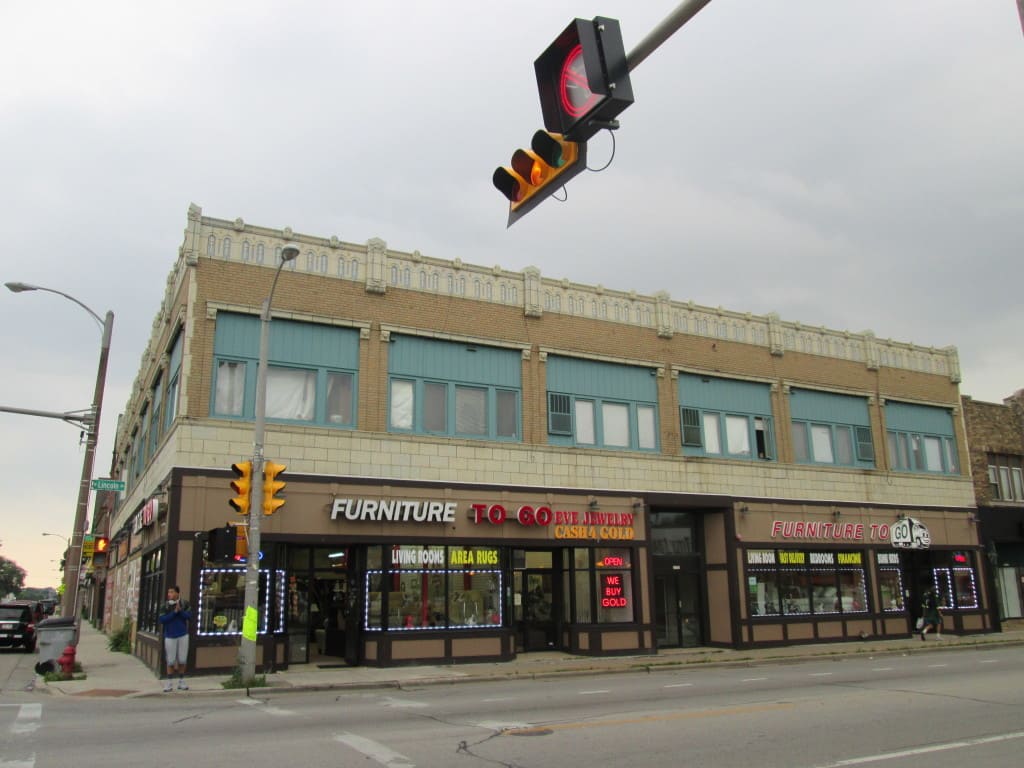
The department stores of yesteryear were more than mere retail outlets; they were the centers of activity, the gathering places for the people of the surrounding community. They offered parades, fashion shows, merchandise demonstrations, and other events to draw the crowds. Some stores provided wheelchairs for the elderly and babysitting rooms to occupy children while their parents shopped. Of course, Santa Claus was on the premises in December, and other attractions were offered at Easter time and on other holidays.
Kiel — Christel’s
Early research showed that shoppers tended to stay on the first floor and within fifty feet of the main entrance. So the ground floors were designed with grand center aisles, high ceilings, glass showcases, and marble floors and pillars. On that first floor most stores sold jewelry, cosmetics, candy, notions, and men’s clothing (Men were thought to be reluctant shoppers and supposedly needed this accommodation).
Shopping was once seen as a day-long outing, something people planned for and looked forward to. It wasn’t considered a chore, as it usually is today. Not only were stores not open twenty-four hours a day, they weren’t open at all on Sundays. On the one night a week when stores stayed open into the evening hours, people dressed up to go shopping. There was a special atmosphere about the place after dark.
Marinette — Lauerman Brothers
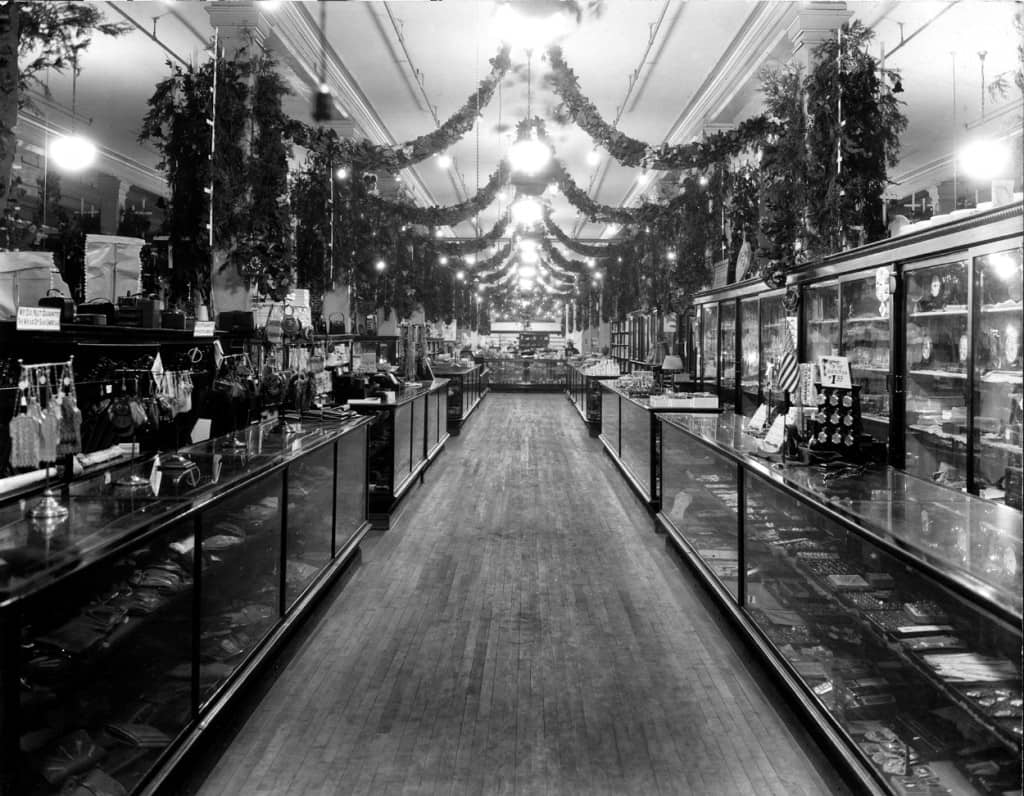
Manitowoc — Schuette Brothers and Henderson-Hoyt
The chain discount stores that took hold in the 1960s (Target, Kmart, Wal-Mart) spelled the end of the department store era. The push for cheaper prices stripped away the niceties of free delivery, gift wrap, holiday parades, and other extras once taken for granted. The small elevators in stores were unable to accommodate shopping carts, now seen as a need for most shoppers, and stores looked for ways to spread out. Where could open real estate be found? Not at the city center, but at the outskirts of town. Downtown areas started to suffer.
Oshkosh
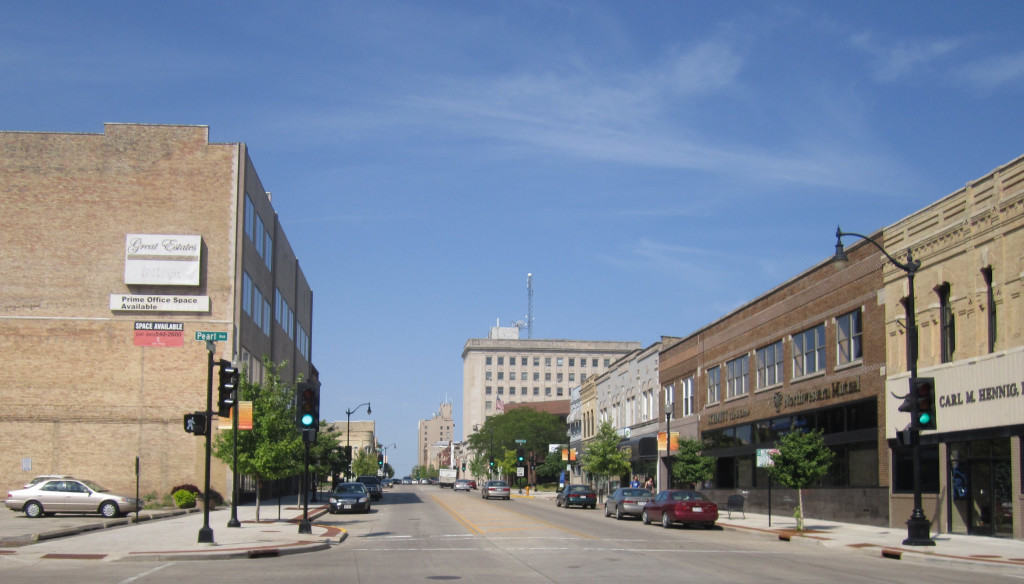
A great number of the classic Wisconsin department stores went out of business in the 1970s and 80s. Some made it a little longer (Schuette’s in Manitowoc until 1994, Goldmann’s in Milwaukee until 2007) before closing their doors. Many of the old buildings are no longer with us, replaced by modern structures or parking lots. Some of the stores still stand but only as shells of their former selves, empty and decaying. A few—very few—remain in business and are still accessible to us. For instance, Schroeder’s Department Store in Two Rivers, though downsized considerably, is going strong after more than 120 years.
If your hometown department store is still standing, consider yourself lucky; most of the old buildings are gone. Many of the buildings that do exist have been converted into office space or apartments. And it’s not unusual for those buildings to have retail space on the ground floor. If this is the case with your old favorite store, you have an opportunity today that many would envy. You can re-enter a world lost to most.
A boutique is housed in Lauermans of Marinette, the store of my childhood, and this allows me the chance to browse among the old familiar marble columns and flooring, grand entrances, enormous show windows. If I listen closely I can still hear the ringing of the cash registers, can feel the buzz and excitement in the air. It’s all still there.
You’re truly lucky if you’re among those who can remember the golden age of the department store. We didn’t know it then, but we were indeed living in the good old days.
Sources
The images in this online exhibit come from the following digital collections. Click the links to browse the full collections.
- Big Streets in a Little City: Downtown Street Scenes in Kiel, 1860-1980, Kiel Public Library. Part of the State of Wisconsin Collection from University of Wisconsin Digital Collections.
- The Home Front – Manitowoc County in World War II. Part of the State of Wisconsin Collection from UWDC.
- Main Street, Oshkosh, Oshkosh Public Library
- Milwaukee Historic Photos, Milwaukee Public Library
- Milwaukee Neighborhoods: Photos and Maps 1885-1992, UW-Milwaukee Libraries
- Remember When . . . Collection, Milwaukee Public Library
Related resources
- Michael Leannah, Something for Everyone: Memories of Lauerman Brothers Department Store, Wisconsin Historical Society Press (2013)
- Lindy Woodhead, Shopping, Seduction, and Mr. Selfridge, Profile Books (2007)
- The Department Store Museum, http://departmentstoremuseum.blogspot.com


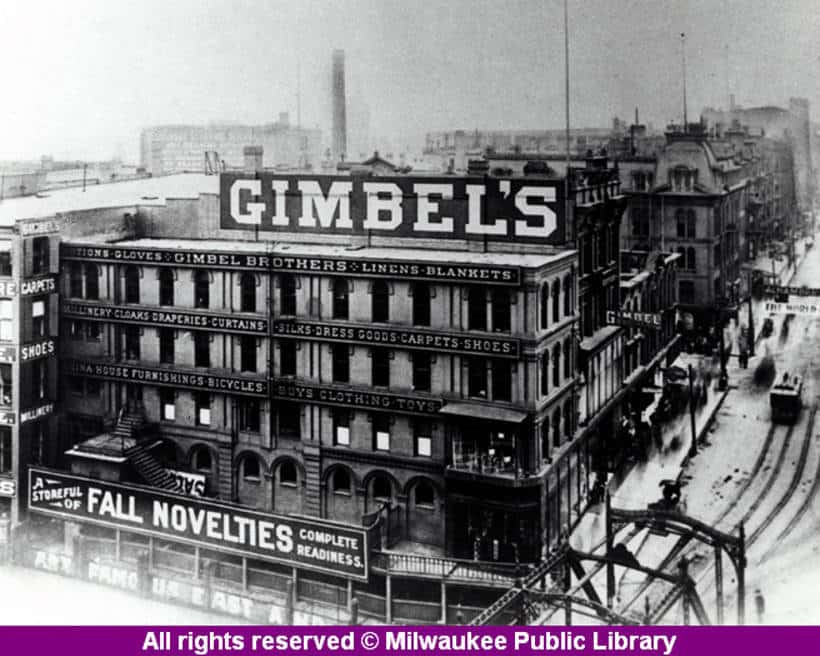
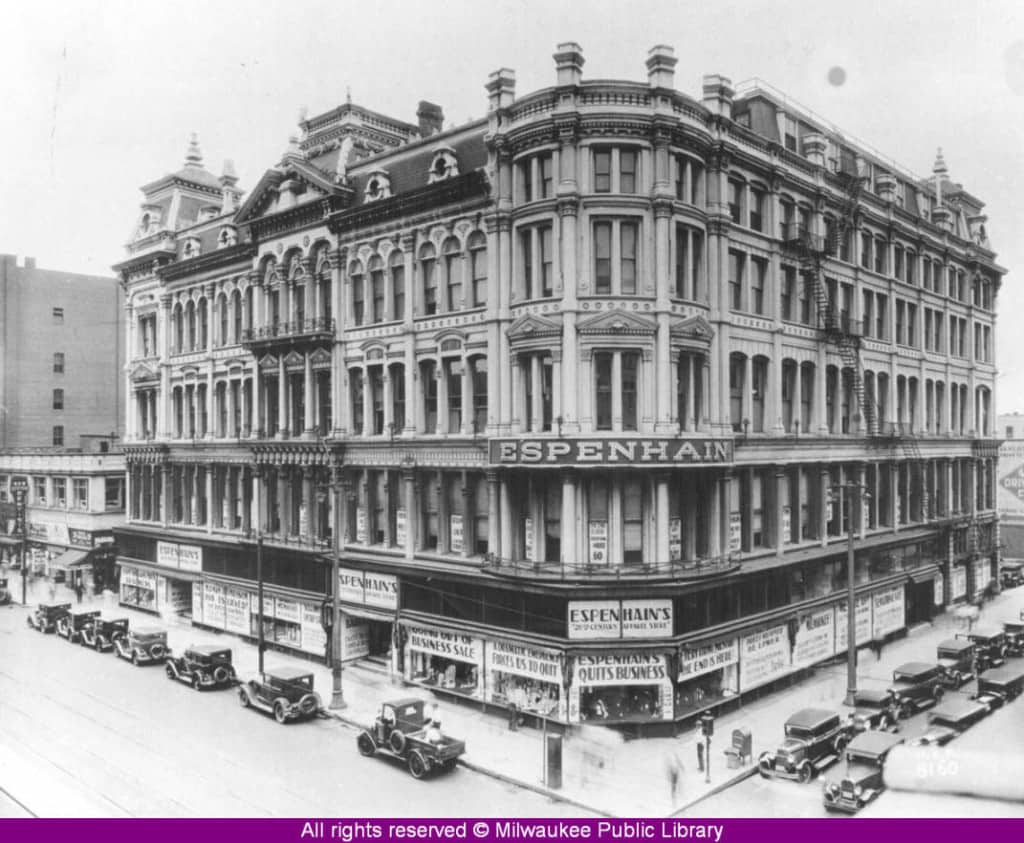
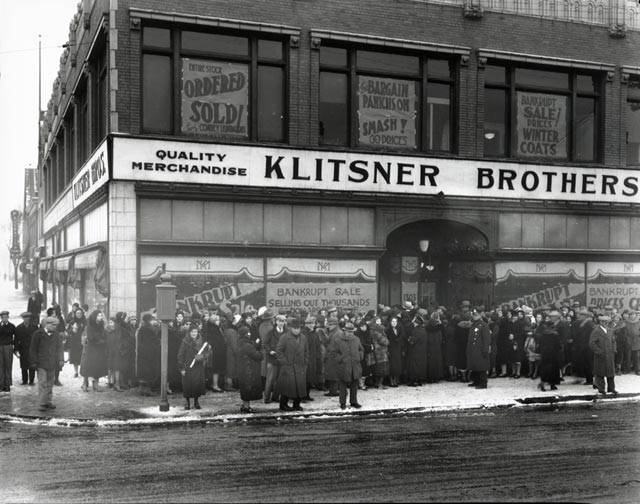
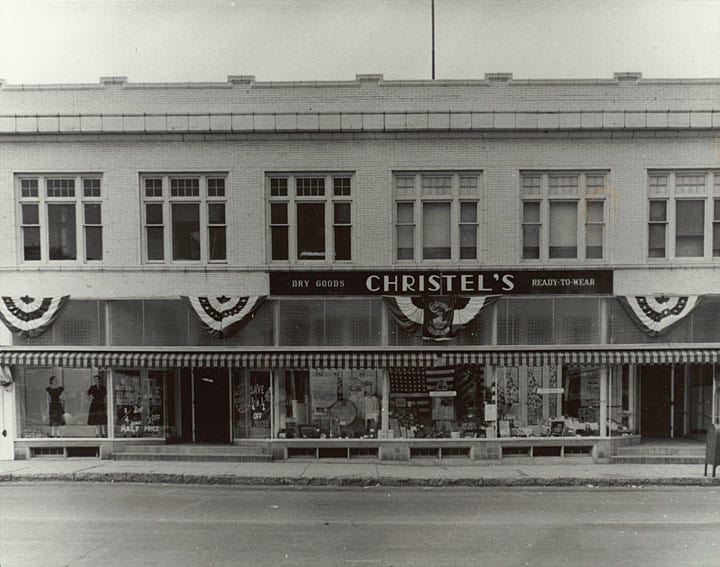
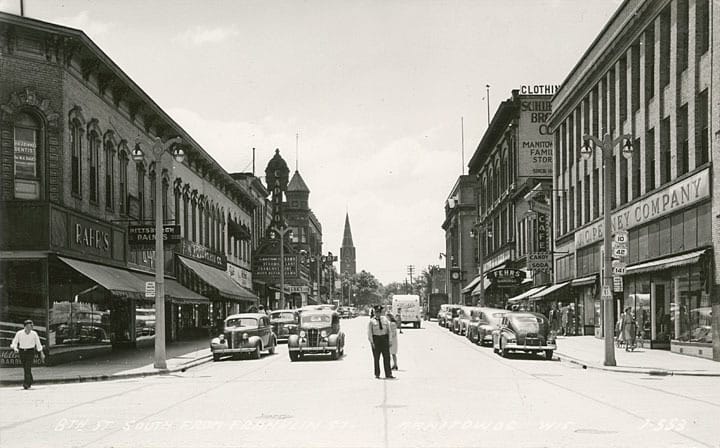
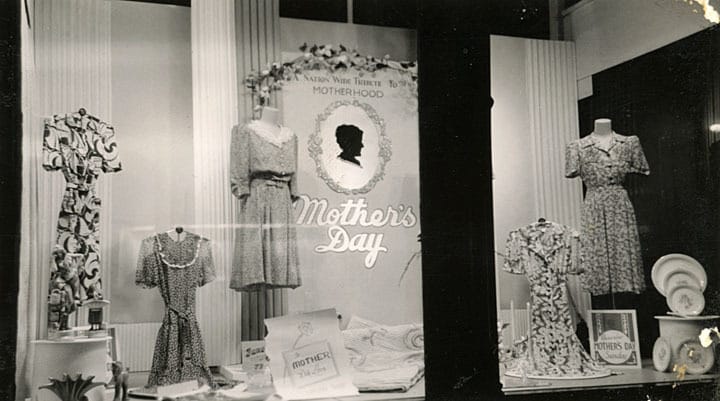
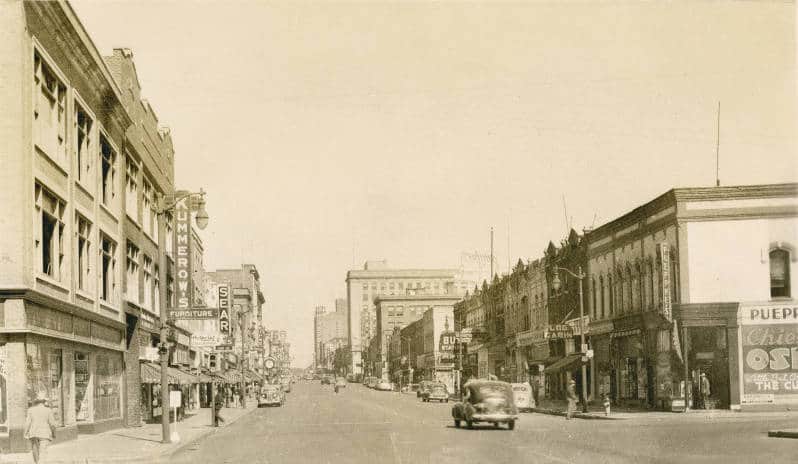


You must be logged in to post a comment.